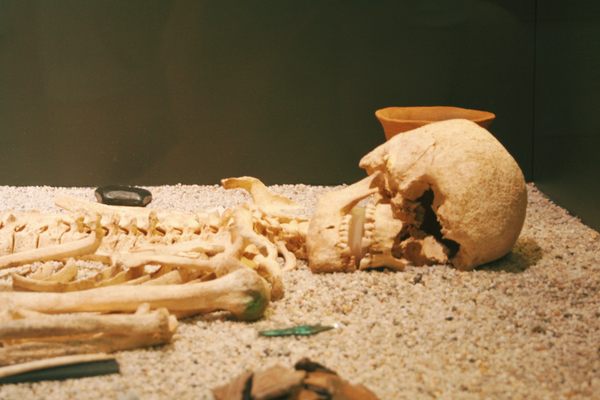About
In 2011 the 11,500-year old skeleton of a small child was found in an ancient fire pit in Alaska, and given the same name as her grave.
Xaasaa Cheege Ts'eniin, or Upward Sun River Mouth Child, was named by the local Alaskan Tribe, after the native name of the site. The remains of Upward Sun River Mouth Child were the oldest to ever be uncovered in North America. Estimated to be three years old at the time of her demise, she is the second youngest Ice Age child ever discovered.
The ancient little girl revealed fascinating information about who lived on the North American side of the Bering Strait land bridge almost 12,000 years ago. Both scientists and native Alaskans were eager to find out about their ancestors. An examination of the girl's teeth suggests that the Ice Age family was biologically linked to Native Americans and Northeast Asians.
The burial site gives insight to how prehistoric Americans survived. The fire pit was part of one of the first discovered permanent prehistoric homes in North America. The animal remains show that the pit was used as a hearth before it was turned into a grave for the young child and the family moved on. Some even speculate that the child wasn't cremated, but was cooked and eaten, though this theory is widely disputed.
Related Tags
Know Before You Go
Location is approximate. Unapproved visitors may not be allowed to access the site.
Community Contributors
Published
October 24, 2013
Sources
- http://news.nationalgeographic.com/news/2011/02/110224-ice-age-child-cremation-human-remains-alaska-science/
- http://www.dailymail.co.uk/sciencetech/article-1360405/Scientists-make-historic-discovery-11-500-year-old-toddler-Xaasaa-Alaska.html
- http://www.outlookseries.com/A0998/Science/3862_Ben_Potter_UAF_Xaasaa_Cheege_Ts_eniin_Ice_Age_Child_Remains_Discovered_Ben_Potter.htm






















